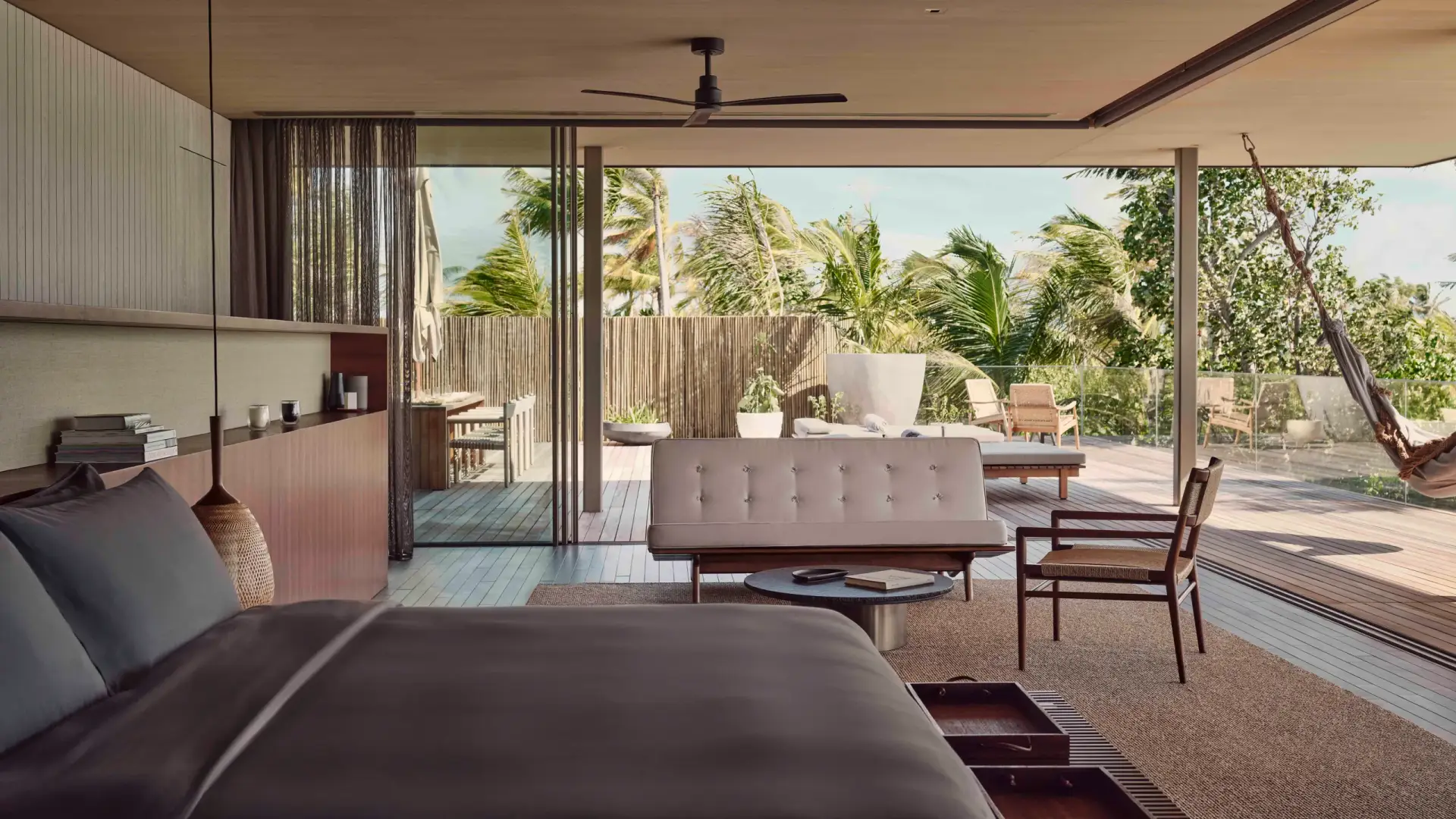
Patina Maldives: How Biophilic Design Redefines Luxury Hospitality Strategy
Patina Maldives, Fari Islands
Opened: 2021
Designer: Studio MK27 (led by architect Marcio Kogan)
Biophilic Features:
Organic Architecture: Curved, fluid structures mimic coral reefs and ocean waves.
Natural Materials: Bamboo, reclaimed teak, and coral-inspired stone walls blend with the environment.
Indoor-Outdoor Integration: Villas feature open-air bathrooms, rooftop decks, and floor-to-ceiling windows framing ocean views.
Living Landscapes: Native plants like pandanus and sea lettuce are woven into pathways and rooftops.
Sensory Design: Soundscapes of lapping waves and wind chimes enhance guest immersion.
In an era where travelers crave authenticity and connection, Patina Maldives—a flagship resort in the Fari Islands archipelago—exemplifies how biophilic design transcends aesthetics to become a strategic business tool. By weaving nature into every facet of its architecture and guest experience, Patina has set a new benchmark for luxury hospitality. Let’s break down the design choices driving its success:
1. Organic Architecture as a Narrative
Designed by Studio MK27, Patina’s curved, coral-inspired structures reject rigid lines in favor of fluid forms that mirror the surrounding seascape. This deliberate blurring of “built” and “natural” creates an instant emotional connection, positioning the resort as a sanctuary rather than a commodity.
Takeaway for Brands:
Guest-Centric Storytelling: Design shapes perception. Patina’s architecture tells a story of harmony with nature—a narrative that aligns with modern travelers’ values.
Sustainability as Strategy: Local materials (reclaimed teak, coral stone) reduce environmental impact while reinforcing cultural authenticity.
2. Sensory Immersion Drives Loyalty
From open-air villas framing uninterrupted ocean views to soundscapes of rustling palms, Patina engages all five senses. Studies show multi-sensory environments increase guest satisfaction by up to 40% and repeat bookings by 25%.
Takeaway for Brands:
Experience Over Aesthetics: Design must feel as intentional as it looks.
Silent Communication: Spaces “speak” to guests without overt branding—a lesson for designers and communicators alike.
3. Designing for Flexibility
Patina’s modular villas adapt to guest needs, offering convertible indoor-outdoor spaces. This flexibility caters to evolving traveler demands (e.g., remote work, wellness retreats).
Takeaway for Brands:
Future-Proofing: Adaptive design ensures relevance amid shifting trends.
Data-Informed Decisions: Guest behavior analytics can shape spatial layouts.
Why This Matters for the Industry
Patina’s success underscores a critical shift: luxury is no longer defined by opulence alone but by meaningful, sensorial experiences that resonate emotionally. For design and communications firms, this means:
Prioritizing holistic storytelling (spaces + brand voice).
Leveraging sustainability as a differentiator, not just a checkbox.
Key Takeaways
Biophilic design isn’t a trend—it’s a strategic lever for guest retention.
Luxury hospitality’s future lies in silent storytelling through space.



Curabitur ullamcorper ultricies nisi. Nam eget dui. Etiam rhoncus. Maecenas tempus, tellus eget condimentum rhoncus, sem quam semper libero, sit amet adipiscing sem neque sed ipsum. Nam quam nunc, blandit vel, luctus pulvinar, hendrerit id, lorem. Maecenas nec odio et ante tincidunt tempus. Donec vitae sapien ut libero venenatis faucibus. Nullam quis ante. Etiam sit

